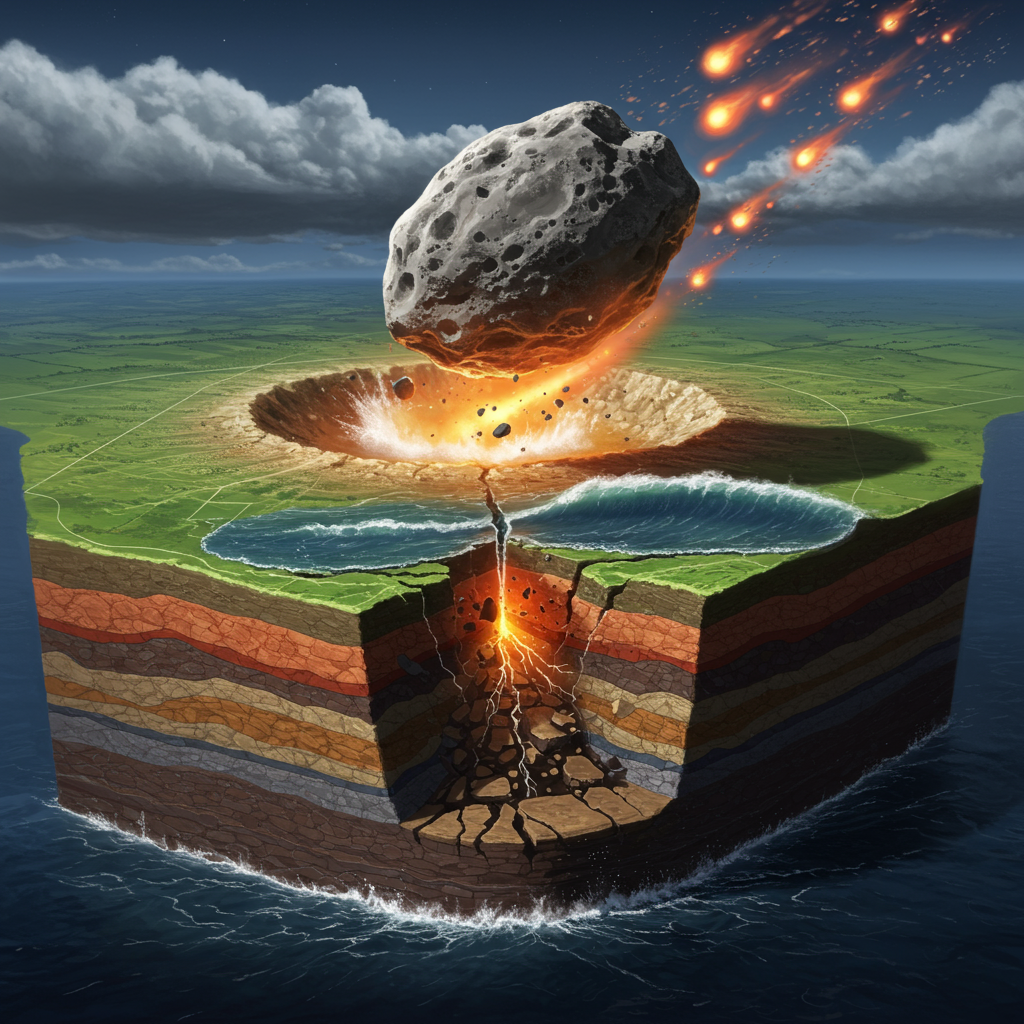Prepare for a spectacular celestial show as the annual Leonid meteor shower prepares for its 2025 peak. This November, sky-gazers worldwide have an exceptional opportunity to witness bright, fast-moving meteors streaking across dark skies. Our comprehensive guide covers everything you need to know: when to look, where to find the best views, and expert tips for maximizing your stargazing experience. Get ready to explore the origins of this cosmic display and understand why this year offers particularly favorable viewing conditions.
What is the Leonid Meteor Shower?
The Leonid meteor shower is a highly anticipated annual event. It captivates observers with its swift, luminous meteors. Unlike some other showers, the Leonids are famed for their potential to produce incredibly intense “meteor storms.” While not a storm year, 2025 promises a rewarding display.
The Comet Behind the Cosmos: 55P/Tempel-Tuttle
Every Leonid meteor you see is a tiny piece of history. These fiery streaks originate from debris shed by comet 55P/Tempel-Tuttle. This icy visitor, discovered in 1865 and 1866, makes its 33-year journey around the Sun. As the comet orbits, it leaves behind a dusty trail of particles. When Earth’s orbit intersects this ancient cosmic pathway, these particles collide with our atmosphere. Friction causes them to heat up and incinerate, creating the brilliant flashes we call meteors. The comet’s nucleus itself measures approximately 2.24 miles (3.6 km) across.
Speed, Brightness, and Unique Phenomena
Leonids are truly remarkable for their incredible speed. Traveling at an astounding 44 miles per second (71 km/s), they are among the fastest meteors observed from Earth. This high velocity contributes to their distinct brightness and often vibrant, colorful appearance. Under optimal conditions, viewers might also spot unique phenomena:
Fireballs: These are larger, brighter bursts of light and color. They last longer than typical meteors, often originating from more substantial cometary debris.
Earth-grazers: These meteors skim along the horizon. They produce long, colorful tails that traverse a significant portion of the sky, offering a truly breathtaking sight.
When to See the Leonids Peak in 2025
Timing is everything for meteor shower viewing. The Leonid meteor shower is typically active for several weeks. However, its most impressive display occurs during a specific peak period.
Optimal Viewing Times
For 2025, the Leonid meteor shower is active from approximately November 3 to December 2. The peak viewing period is set for the night of Sunday, November 16, into the morning of Monday, November 17. Sky-watchers should aim to begin their observation around midnight local time. The best rates are usually seen in the pre-dawn hours leading up to sunrise on November 17. An additional viewing opportunity may also present itself in the early morning hours of November 18. This specific timing provides the darkest skies before dawn’s light begins to interfere.
Favorable Lunar Conditions
This year, stargazers are in for a treat due to highly favorable lunar conditions. The Moon will be in its waning crescent phase during the peak, illuminating only about 7-9% of its surface. This minimal illumination means the Moon will be too dim to cause significant light pollution. This creates an ideal, dark sky backdrop, enhancing the visibility of even fainter meteors. Many meteor showers suffer from bright moonlight. This makes the 2025 Leonids a prime opportunity for clear, unobstructed views.
How to Maximize Your Leonid Stargazing Experience
You don’t need any special equipment to enjoy the Leonids. In fact, telescopes and binoculars are generally discouraged. They limit your field of view, making it harder to catch meteors that can appear anywhere across the vast night sky. Simple preparation is key to a rewarding experience.
Finding Your Perfect Dark-Sky Spot
The single most important factor for meteor shower viewing is escaping light pollution. City lights significantly reduce the number of visible meteors. Seek out a location far from urban centers and streetlights. National parks, rural areas, or even your own backyard, if sufficiently dark, can be excellent choices. Some regions, like Mississippi, even have designated dark sky locations such as Bienville National Forest or sections of the Natchez Trace Parkway, offering superb conditions. Prioritize an unobstructed view of the horizon in all directions.
Essential Viewing Tips and Gear
Once you’ve found your dark spot, follow these tips for an optimal viewing experience:
Allow Eye Adaptation: Your eyes need about 20-30 minutes to fully adjust to the darkness. Avoid looking at bright screens (like phones) or flashlights during this time.
Position for Comfort: Lie flat on your back, perhaps on a reclining chair, sleeping bag, or blanket. Orient your feet towards the east, and look up to encompass as much of the sky as possible. While meteors appear to radiate from the constellation Leo (hence “Leonids”), looking slightly away from Leo can actually help you see longer, more dramatic meteor tails due to a perspective effect called foreshortening.
Dress Warmly: November nights can be chilly. Bring extra layers, blankets, or even a warm drink. Comfort will allow you to stay out longer and enjoy the show.
Check Weather Forecasts: Clear skies are essential. Always check your local weather and cloud cover predictions before heading out.
Be Patient: Meteor showers are not constant streams. There will be lulls between bursts of activity. Relax, enjoy the night sky, and you’ll be rewarded.
Understanding Leonid Meteor Storms: A Look Back and Forward
The Leonids hold a special place in astronomical history due to their capability for extraordinary meteor storms. These events are far beyond typical showers.
Historic Spectacles: When Meteors Rained Down
Throughout history, the Leonids have delivered some of the most memorable meteor storms. These are rare occurrences where thousands of meteors per hour can be seen, often described as meteors “falling like rain.”
1833: This legendary storm saw rates so high that people feared the end of the world.
1966: A truly spectacular event, with estimates of 1,000 meteors per hour during its peak, some even reporting 40 meteors per second for brief periods. Skywatchers vividly recalled meteors “falling like rain.”
1999 & 2001: Significant outbursts occurred, with the 1999 event over the Azrak desert reaching an estimated 1,500 meteors per hour.
2002: The last significant “outburst” or meteor storm-level activity from the Leonids was recorded.
The 33-Year Cycle and Future Outlook
These intense meteor storms coincide with comet 55P/Tempel-Tuttle reaching perihelion – its closest point to the Sun in its 33-year orbit. During this approach, the comet sheds a denser trail of debris. If Earth passes directly through this dense part, a storm ensues.
However, recent analysis from the American Meteor Society offers a different outlook for the near future. While regular Leonid meteor showers will continue, the dramatic, storm-level events akin to those in 1966 or 1999 are not expected during the comet’s anticipated returns in 2031 or 2064. In fact, experts predict that Earth will not encounter any dense clouds of debris from the comet until approximately 2099. This means while 2025 offers a good show, we shouldn’t anticipate a “storm.”
Other Celestial Events to Watch in Late 2025
The Leonids are just one highlight of a busy stargazing season. Keep an eye out for these other captivating celestial events nearing the end of the year.
Upcoming Meteor Showers
Orionids: Active September 26 – November 22, peaked October 22/23 (2% moon).
Southern Taurids: Active October 13 – November 27, peaked November 4/5 (96% moon).
Northern Taurids: Active October 13 – December 1, peaked November 8/9 (83% moon).
Geminids: Active December 1 – December 21, peaking December 13/14 (30% moon). Often considered one of the best showers of the year, potentially offering over 100 meteors per hour.
Ursids: Active December 16 – December 26, peaking December 21/22 (3% moon). This shower, like the Leonids, benefits from minimal moonlight interference in 2025.
Quadrantids: Begins December 26, 2025, but peaks January 3, 2026 (100% full moon).
Notable Lunar Events
Beyond meteor showers, the late 2025 sky also features a significant lunar event:
December 4: Cold Moon (Supermoon): Keep an eye out for the last full supermoon of the year, known as the Cold Moon. This will be an impressive sight, appearing slightly larger and brighter than average full moons.
Frequently Asked Questions
What makes the Leonids unique among meteor showers?
The Leonid meteor shower stands out for several reasons. Leonids are exceptionally fast, traveling at about 44 miles per second, making them among the quickest and brightest meteors visible. They are also known for producing “fireballs,” which are larger and more brilliant than typical meteors, and “Earth-grazers,” meteors that streak low across the horizon with long, colorful tails. Historically, the Leonids are most famous for their potential to produce dramatic “meteor storms,” although such intense events are not expected again until around 2099.
Where are the best locations and directions to watch the Leonid meteor shower?
To best view the Leonid meteor shower, find a location far removed from city lights and other sources of light pollution. Rural areas, national parks, or designated dark sky locations offer optimal conditions. Once settled, lie flat on your back with your feet pointed towards the east. While Leonids appear to radiate from the constellation Leo, looking slightly away from this radiant point can help you spot meteors with longer, more impressive tails across the entire sky.
Should I use binoculars or a telescope to view the Leonid meteor shower, and what other gear is recommended?
No, you should avoid using binoculars or telescopes for meteor shower viewing. These optical aids limit your field of vision, making it difficult to catch the fast-moving meteors that can appear anywhere in the sky. Your unaided eyes are the best tool. For comfort, bring a reclining chair, sleeping bag, or blanket. Dress warmly in layers, as November nights can be cold, and allow 20-30 minutes for your eyes to fully adjust to the dark before starting your observation.
Conclusion
The 2025 Leonid meteor shower offers a fantastic opportunity for stargazers to connect with the cosmos. With favorable moon conditions and the promise of swift, bright meteors, it’s an event not to be missed. While a dramatic “storm” isn’t on the cards this year, the annual display remains a captivating reminder of our planet’s journey through space. By following our expert viewing tips, you can ensure a comfortable and rewarding experience. So, mark your calendars for November 16-17, find your darkest spot, look up, and let the Leonids inspire you.




